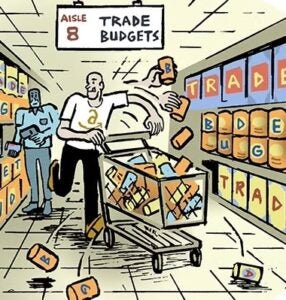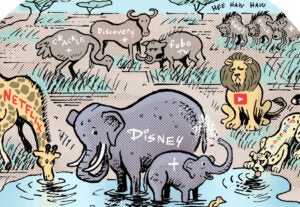 Seven-year-old mobile agency M&C Saatchi Mobile offers strategic consulting, mobile production, and mobile paid media services. The London-based firm, part of independent agency network M&C Saatchi, employs about 75 staff, and its paid media efforts are focused on direct-response campaigns.
Seven-year-old mobile agency M&C Saatchi Mobile offers strategic consulting, mobile production, and mobile paid media services. The London-based firm, part of independent agency network M&C Saatchi, employs about 75 staff, and its paid media efforts are focused on direct-response campaigns.
Eric Mugnier came to New York in 2011 to open M&C Saatchi Mobile’s first US office. It has since opened shop in LA, from which vantage point Mugnier now oversees the agency’s North America business. There are also outposts in South Africa and Australia.
Mugnier says the cost of media is very low, owing to an abundance of supply. That creates real opportunities to drive efficiency in mobile media. However precious little of that mobile inventory is real-time bidding enabled today.
“The problem today with mobile DSPs is scale,” he says. “Even though the inventory is growing, a large portion of the total mobile display inventory is still not RTB‑enabled, which means that the more targeted you are, the less scale you get.”
Mugnier spoke with AdExchanger recently.
Which categories show the biggest potential in terms of paid mobile media spend?
The main activity we see is for [mobile apps], whether it’s digital goods, utility brands and products, or games. Although it’s not the largest category, it is in the mobile world, in terms of the number of apps and the aggressiveness of the media plan.
We focus more on downstream value for our clients. For us, getting a cheap download is good, but getting a cheap user that generates money for that client is a lot better. We tend to make sure that we optimize based on the downstream value, whether it’s a subscription or a purchase of a piece of content within that mobile environment.
What pricing and ROI trends do you see in mobile advertising? Is it getting more expensive to drive high‑value actions, less expensive, or is it consistent?
About three years ago, mobile [began] being efficient and driving ROI as a channel. For every dollar of spend, clients were getting a higher value. Obviously it didn’t work for everyone three years ago, but it worked for more and more people.
Now we are seeing more categories and types of clients that are efficient. The cost of the media is going down. If I buy on a click, or if I buy on the impressions level, it’s going down. I don’t think it’s going to go below what it is now, because I would say it’s very cheap. There’s a lot of supply — a lot of networks, a lot of publishers. The cost of the media itself is very low.
But the cost of acquisition — that can differ greatly. It depends on the client.
There’s a great deal of talk right now about the value of location data in mobile relative to other data attributes. How valuable is it really?
It can be very valuable, actually. The problem I see today is that everyone is trying to use location, even if it’s not relevant for that specific brand. You need to use it when it’s appropriate. It’s appropriate for something like local deals, to locate smartphone users that are in New York, to offer them the latest deals that I’ve secured in New York.
Is it relevant to target a user with a product that they can consume on their mobile, but doesn’t require location? A newspaper or a piece of content? You might find better results, or better scale in big cities, but you’d need to use that location in a very smart way.
What’s your take on mobile DSPs and real‑time bidding? Where’s the value being created?
You’ve got more and more RTB‑enabled inventory, and a lot of DSP players who are trying to fight for the space right now. The targeting can be powerful.
If a user has an iPhone, is walking down Fifth Avenue, and his page is loading on this website that he’s browsing, and we are about to serve him an ad, who wants that user? If you bid the right price, if it’s relevant for you, then you can be very efficient.
The problem today with mobile DSPs is scale. Even though the inventory is growing, a large portion of the total mobile display inventory is still not RTB‑enabled, which means that the more targeted you are, the less scale you get.
Who do you give the better odds: mobile DSPs or bigger DSP players who are trying to get into mobile?
All those online players are trying to get into mobile, but without understanding the specificity of mobile’s history. The ones that are building with mobile specificity and knowledge are showing better results.
Don’t get me wrong, the big online DSPs, with the power that they have, will probably catch up very quickly as the mobile industry grows. But they will need to make some big adjustments to be efficient.













